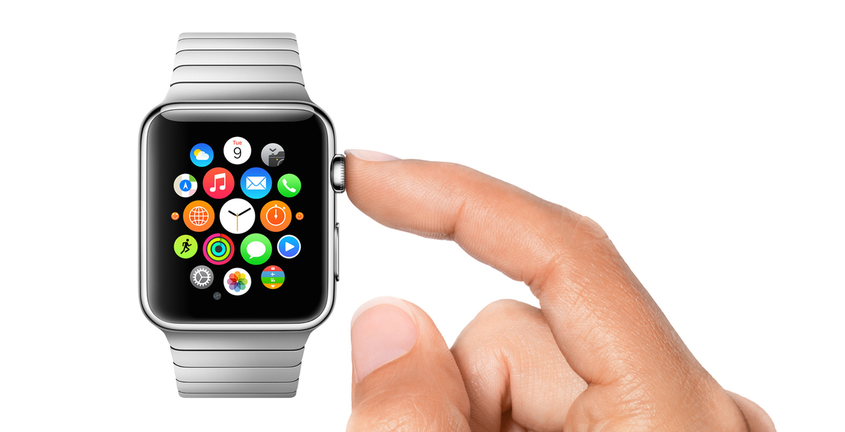What’s next for Mobile? Future predictions for 2015 (Part 2) close
In Online Innovation

If you saw our previous post on key mobile trends for 2015, where we looked at some of the insights from the BI Intelligence report, you’ll know that mobile advertising, mobile commerce and mobile apps are all set to grow. Despite the resistance from some of the businesses occupying this space, they are all areas which we’d hope they’d be somewhat familiar with, even if they hadn’t yet thought about how their brand would continue to stand out, as mobile becomes more mainstream. But what about those devices and platforms that may not even be on the market yet? It can be difficult to work out how your business will adjust to a device or area that hasn’t even been developed yet but it’s also essential to think about it early, if you are to be there and present, when the game changes. So in the second part of our future predictions, we wanted to look at what ‘mobile’ will mean next year and how this will affect businesses and brands.
Emerging Devices…
At the moment, when we think of ‘mobile’ we think of smartphones and tablets, or at the most, the ‘phablet’ which has risen in popularity over the last year. But what about car radios, iWatches and Apple TV? Wearable computing and connected devices may still be in their infancy but they’re looking very promising for the future and will increase the amount and the frequency, of when advertisers can access their audiences.
While the long-hailed Google Glass seemed to crash before it even really got going, smartwatches are set to peak, with the Apple watch in the lead. This has led us to consider just how many devices the mobile-friendly user will be adopting in the next few years. The study suggests that 41% of TV audiences use a phone or tablet while watching TV, dubbed ‘second screen viewing’ but this could increase to as many of five devices, as wearables, tablets, smart TVs, smartphones and personal computers become standard devices for every family.
So what does this mean for businesses? Firstly, if you think it’s difficult to get your website to look great on a mobile device, think how much more reworking it will need to be viewed on the smallest screen yet; a watch. Designers will also need to zoom in on the iconography of their designs, as users become more accustomed to recognising features through symbols alone, as screens get smaller and harder to navigate.
The type of device will also change the way search engines produce results - a small watch screen is likely to display only the first search engine result and this is something that Google is already preparing for. When Google Hummingbird was introduced last year, it’s biggest update to the algorithm was that it had semantics at the heart of it. This ‘context-first’ approach will help smaller and more intricate devices to get to the heart of what the user wants much more quickly and is something brands should be aware of, when looking at their marketing and SEO practises going forward.
‘Connected homes’ which we touched on in the past will also increase, with the focus going into smart home energy and security. Outside of the home, will also see a rise in connected technology. The study suggests that tens of million of cars will come with internet connections over the next few years, therefore creating a ‘connected’ experience that incorporates many other aspects of the driver’s life. At the moment, the ‘killer’ car apps are standard commodities such as traffic reports, music and weather, but in-vehicle services which can send information to drivers in realtime will be big business over the next few years. This type of connected device will truly merge the digital and physical world and it’s something that brands need to begin preparing for now.
Mobile payments and banking
The adoption of mobile has also began to disrupt many giant industries, such as banking. Old payment habits such as checks have been dying for a long time but cash is also fading and the ‘mobile wallet’ has become an interesting prospect. Half of online banking customers use mobile and for the younger generation, it’s even higher.
According to the report, 94% of millennials are active users of online banking and 39% of them would consider using a branchless digital bank. While older generations are still fairly attached to depositing checks and making other transactions with banks, millenials report a much less positive experience with their retail bank.
Mobile is beginning to change how we pay for things and NFC is currently the in-store payment method of choice through Apple pay, although if there was a new system to be introduced, the shoppers current bank was voted as the preferred mobile wallet outlet (27%), follow by Paypal (16%) and then Visa (12%).
Key takeaways for businesses from Part 2:
- While wearable technology may not be mass-market just yet, brands should start thinking about how it might affect their business in the future
- ‘Second-screen’ viewing should be a factor taken into consideration when looking at marketing strategy for 2015, to determine where an audience will be and how much attention they’ll really be paying at any given time
- Brands should look at the ‘context’ of their marketing, to make the most of the connection between digital and physical worlds that mobile devices offer
- Businesses will need to be aware of how mobile is disrupting even giant industries such as Banking, in order to predict how it will affect their business and to ensure that the way they manage their financial aspect will not make them obsolete in a mobile-first future